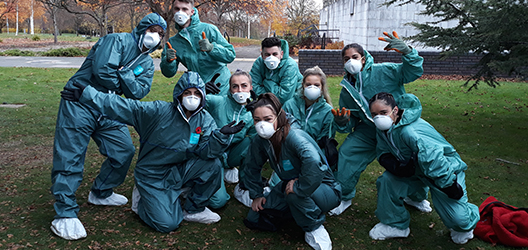27 Nov 2018
Grime Scene Investigation results revealed
For the first time, a major Grime Scene Investigation where recycling and waste from all 16 student halls were audited took place on campus earlier this month.
Organised by the Sustainability Team, and with the support of around 35 FREEC Reps and Action volunteers, the day was spent outside the Edward Herbert Building emptying, weighing and sorting waste.
A total of 48 bags of general waste weighing 155.8kg and 48 bags of recycling weighing 67.72kg were audited on the day.
The Sustainability Team collected data from the audit, and have provided the following findings:
General waste discoveries
Food comprised 57% of all general waste audited (see Fig. 1). Considering ten of the halls have food caddies provided, little to no food should be entering the general waste stream from most halls.
Recycling comprised 10% of general waste audited and other items (including textiles and batteries) made up almost 8%.
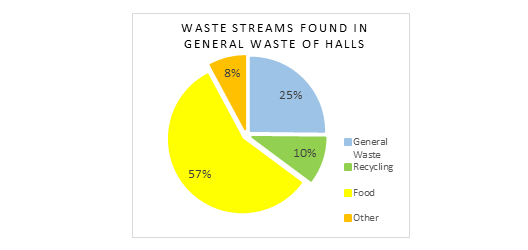
Figure 1
Several halls exhibited high amounts of ‘other materials’ – such as shoes, clothes, glass and crockery. Only a quarter of the general waste audited consisted of genuine general waste, indicating room for improvement to be made by all of the halls.
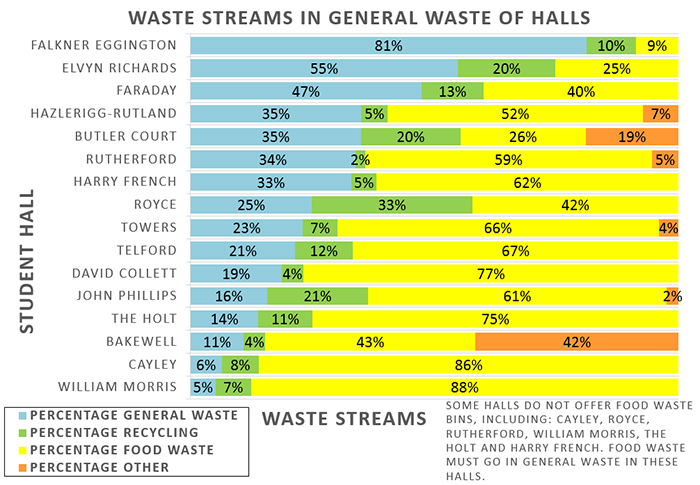
Figure 2
Recycling findings
Several halls proved inspiring examples of good recycling, with over 90% correct in their samples (see Fig. 3).
On the other hand, some halls exhibited very high levels of contamination within their recycling, where 36-44% comprised of general waste, and 41-50% was made up of food waste. Food waste in recycling is particularly troublesome, as it can contaminate and ruin large quantities of prime recyclable material. For example, paper and cardboard that become wet from liquids left in bottles become unrecyclable.
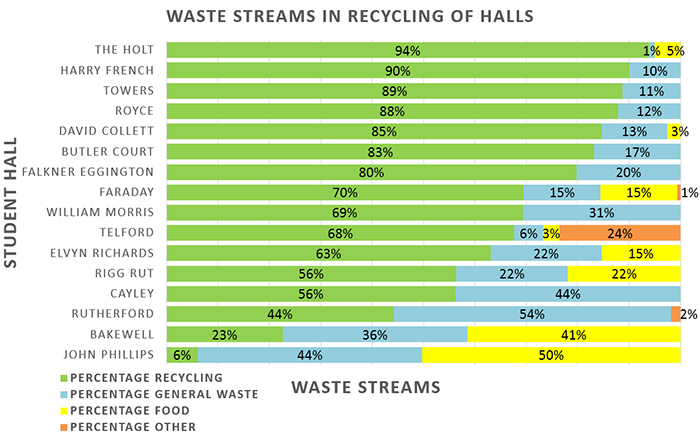
Figure 3
Conclusion
The Grime Scene Investigation has provided the Sustainability Team with valuable data that will be tailored and shared to each hall. A second Grime Scene Investigation day has been planned for Semester 2, which will be undertaken to provide each hall with the chance to improve upon their initial results and compete against each other for the best marks in the Green League - the interhall competition based on recycling, energy reduction and proactivity.
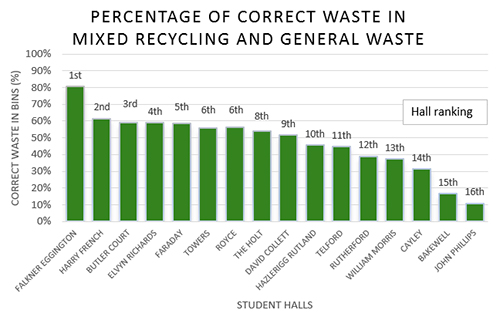
Figure 4
Jo Shields, the University’s Sustainability Manager, commented: “Using the old adage ‘if you can’t measure it, you can’t manage it’, this most recent Grime Scene Investigation will help us better inform our students and create more targeted campaigns across the Halls.
“Data like this provides a great foundation to deliver informed behaviour campaigns, and will hopefully help students become better at managing their waste, improve their recycling and support the University Environmental Policy.
Below are some handy tips on what can and can’t be recycled on campus:
- Crisp packets, kitchen paper towels, disposable cups, black plastics and polystyrene of any sort cannot be recycled and must be put into general waste.
- Items like yoghurt pots, milk cartons and glass sauce jars must be emptied and rinsed, or they can contaminate the entire bag of recycling.
- Clothes, shoes and crockery must not be disposed of in general waste – they can instead be donated to the British Heart Foundation through the donation banks dotted around campus.
For more information about recycling in Halls, check out the A-Z guide which is available to view online.















